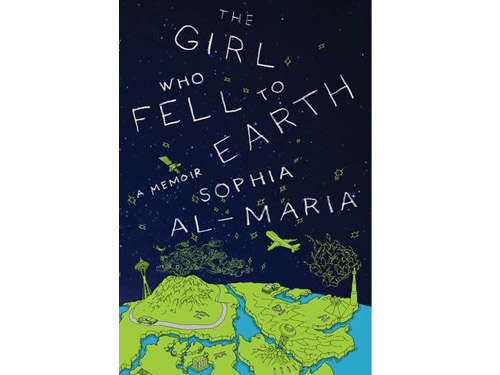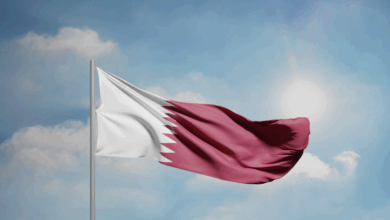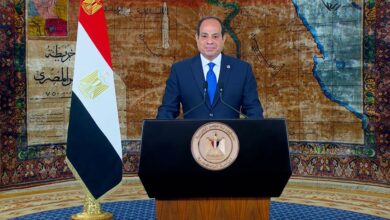
Sophia al-Maria’s story begins at night, 80 miles outside of al-Hasa oasis in eastern Saudi Arabia. It begins decades before her birth, and thousands of miles away from the city where she will be born. Her young father, Matar, is from al-Dafira, and his community moves between Qatar and Saudi Arabia. As the book opens, he is watching the legendary Samira Tawfiq perform on a communal television.
Ten-year-old Matar doesn’t save all his admiration for Lebanese songstresses; he watches plenty of American television, too: Lost in Space, Popeye, Mr. Ed, Perry Mason, Star Trek. Among all the children, Sophia’s father is the one who remains by the television long after the shows are over, making notes in an old graph paper notebook. Matar learned about the night sky from his mother, about tracking things from his father, and about many other things from TV. At sixteen, Matar’s brother joined the Qatari air force. Matar tried to join the navy, but, since he hated the water, he lasted only five days.
Here, “The Girl Who Fell to Earth” (Harper Perennial, 2012) seems to walk a familiar path: Matar goes to Doha, gets a scholarship, and is sent to Seattle to learn English. Almost immediately, he meets a woman in working-class Tacoma who is stunningly, generously open. The opening segments of the memoir are beautiful, as we watch the gently drawn love story of the narrator’s parents.
They meet in a bar, and Matar — unable to speak much English — is content to gaze with Gale at the pictures in a magazine. Here, Gale is at her strongest and most open. Despite Matar’s odd attire and fragmented English, she welcomes this young man from, “Only. Just. Arabia.” She takes him up into the mountains and creates a space for him in her world.
Over the next few years, Matar and Gale grow closer: Gale gets pregnant, they marry, and she converts to Islam. But, although their union brings forth two daughters and a great deal of love, their pasts and cultures germinate other seeds. Gale is affected by the popular stories about kidnappers and Arab “child-snatchers,” such as Betty Mahmoudy’s “Not Without My Daughter.” Matar is drawn back toward his family.
Still, in the early days, we see a young couple who are bold, original, and willing to make concessions. Despite his hatred of water, Matar agrees to learn to swim. Gale learns how to pray. Matar tries long-distance trucking. Gale starts wearing the hijab.
These compromises eventually take them back to Qatar, where Gale lives mostly alone with her daughters and Matar works out on an oil rig. Here, the young narrator begins to take center stage. She comes into contact with her Dafira family, and is “so emancipated by the chaos” that she feels her world shift.
This is also where the book takes a very different turn from most Arab-American memoirs, a genre where “roots” and “family” are typically in the East while “emancipation” is Western. In its most caricatured form, the genre is represented by Nonie Darwish’s best-selling “Now They Call Me Infidel; Why I Renounced Jihad for America, Israel and the War on Terror.”
Recently, however, a few English-language narratives have pointed in another direction. G. Willow Wilson’s 2011 memoir “The Butterfly Mosque” moves from the US to Cairo, and her debut prose novel, “Alif the Unseen” (2012), has characters who make their core realizations by moving to an Arab country rather than away from one.
But “The Girl Who Fell to Earth” strikes out yet further. It is an Arab-American woman’s memoir where roots are in two places, but emancipation is found mostly in Qatar and Egypt.
When Matar and Gale split up, Sophia moves back to Washington with her mother and sister. Here, the story turns painful. Gale, who was once so bold, becomes suspicious of the outside world and of her quirky eldest daughter. Sophia’s schoolmates wonder, “Is Saddam your dad?”
When Sophia discovers David Bowie, sexuality, and begins dressing in a style she describes as “glitter-grunge-via-Gulf,” Gale is not happy: “You look ridiculous,” Ma growled, snapping the elastic bands off my head. “You need to keep a lower profile,” she warned. “There are predators on the lookout for girls like you!”
Sophia escapes her pressurized life in Washington by returning to Doha. But this is not an easy path to liberation, either. Her Dafira family has recently moved from tents into cumbersome, suffocating cinderblock apartments. Sophia struggles against the strict gender segregation, due in part to these new apartments. Yet, “Doha was surprisingly free for me compared to Puyallap. There was no curfew, no diet, and no one able to read my diary.”
But the path to “liberation” never runs straight: Sophia has a clandestine relationship with a classmate, which is thwarted. Her application to New York University is never sent. Instead, she ends up at the American University in Cairo.
While in Cairo, Sophia continues to delight in turning the usual on its head. When a professor hires her to interview Sinai Bedouin, she accepts. But instead of interviewing, Sophia tells the interviewees about herself. A woman named Kawthar listens to Sophia’s story and asks, “So you went to Qatar. What were you looking for?”
“A crippling cringe gripped me as my voice answered, ‘I guess I wanted to find myself.’”
At the end of the book, Sophia al-Matar is still grasping for a way of seeing herself that is neither “Ma’s pragmatic ideals of manifest destiny” nor “Baba’s deep belief in the precision of Allah’s intention.” It is a new era, and she is trying to oblige it by seeing herself, and our world, in a new way.




